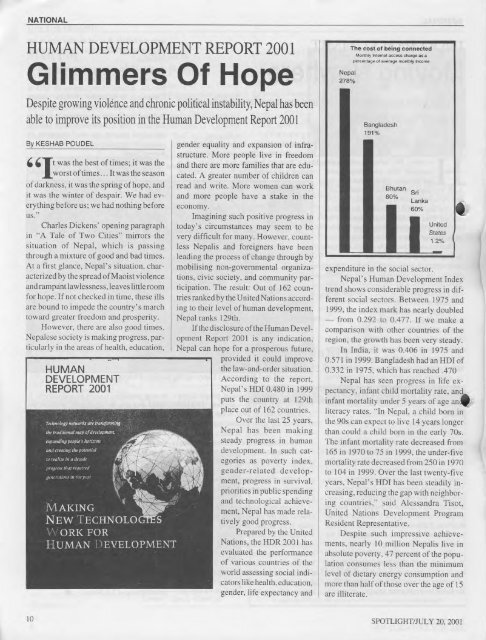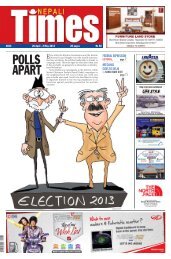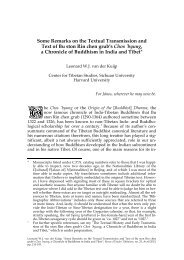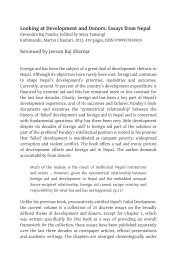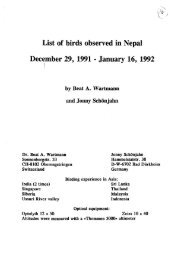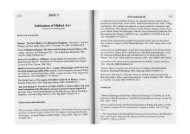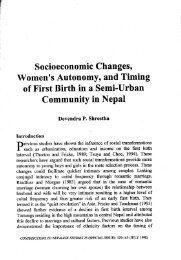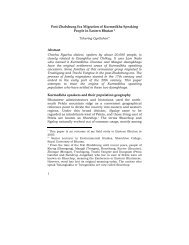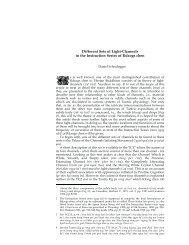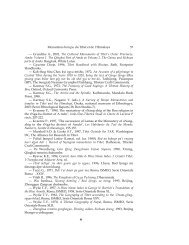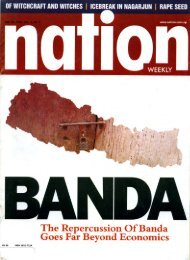• RNA Gheraoes Maoists • Vajpayee-Musharraf ... - Digital Himalaya
• RNA Gheraoes Maoists • Vajpayee-Musharraf ... - Digital Himalaya
• RNA Gheraoes Maoists • Vajpayee-Musharraf ... - Digital Himalaya
You also want an ePaper? Increase the reach of your titles
YUMPU automatically turns print PDFs into web optimized ePapers that Google loves.
NATIONAL<br />
HUMAN DEVELOPMENT REPORT 2001<br />
Glimmers Of Hope<br />
Despite growing violence and chronic political instability, Nepal has been<br />
able to improve its position in the Human Development Report 200 I<br />
Nepal<br />
278%<br />
The cost of being connected<br />
Monthly Internet access charge as a<br />
pelCef1tage 01 average mcmlhly inco"..,.<br />
By<br />
,'It KESHAB POUDEL<br />
was the best of times; it was the<br />
worst ofumes ... It was the season<br />
of darkness, it was the spring of hope, and<br />
it was the winter of despair. We had everything<br />
before us; we had nothing before<br />
us.<br />
Charles Dickens' opening paragraph<br />
in "A Tale of Two Cities" mirrors the<br />
si tuation of Nepal, which is passing<br />
through a mixture of good and bad times.<br />
At a first glance, Nepal's situation, characterized<br />
by the spread of Maoist violence<br />
and rampant lawlessness, leaves Iittleroom<br />
for hope. If not checked in time, these ills<br />
arc bound 10 impede the country 's march<br />
toward greater freedom and.prosperity.<br />
However, there arc also good times.<br />
Nepalese society is making progress, particularly<br />
in the areas of health, education,<br />
HUMAN<br />
DEVELOPMENT<br />
REPORT 2001<br />
gender equality and expansion of infrastructure.<br />
More people live in freedom<br />
and there are morc families that are educated.<br />
A greater number of children can<br />
read and write. More women can work<br />
and more people have a stake in the<br />
economy.<br />
Imagining such positive progress in<br />
roday's circumstances may seem ro be<br />
very difficult for many. However, countless<br />
Nepalis and foreigners have been<br />
leading the process of change through by<br />
mobilising non-governmental organizations,<br />
civic society, and community participation.<br />
The result: Out of 162 countries<br />
ranked by the United Nations according<br />
to their level of human development,<br />
Nepal ranks 129th.<br />
If the disclosure of the Human Development<br />
Report 200 I is any indication,<br />
Nepal can hope for a prosperous future,<br />
provided it could improve.<br />
the law-aod-order situation .<br />
According to the report,<br />
Nepal's HDI 0.480 in 1999<br />
puts the country at 129th<br />
place out of 162 countries.<br />
Over the last 25 years,<br />
Nepal has been making<br />
steady progress in human<br />
development. In such categories<br />
as poverty index,<br />
gender-related development,<br />
progress in survival ,<br />
priorities in public spending<br />
and technological achievement,<br />
Nepal has made relatively<br />
good progress.<br />
Prepared by the United<br />
Nations, the HDR 200 I has<br />
evaluated the performance<br />
of vari ous countries of the<br />
world assessing social indicators<br />
like health, education,<br />
gender, life expectan cy and<br />
United<br />
Slates<br />
, .2"i.<br />
expenditure in the social sector.<br />
Nepal's Human Development Index<br />
trend shows considerable progress in different<br />
social sectors. Between 1975 and<br />
1999, the index mark has nearly doubled<br />
- from 0.292 to 0.477. [I' we make a<br />
comparison with other countries of the<br />
region, the grow th has been very steady.<br />
In India, it was 0.406 in 1975 and<br />
0.571 in 1999. Bangladesh had an HDI of<br />
0.332 in 1975, which has reached .470<br />
Nepal has seen progress in life expectancy,<br />
infant child mortality rate, an'la.<br />
infant mortality under 5 years of age an ..<br />
literacy rates. "In Nepal, a child born in<br />
the 90s can expect to live 14 years longer<br />
than could a ch ild born in the early 70s.<br />
The infant mortality rate decreased from<br />
165 in 1970 to 75 in 1999, the under-five<br />
mortality rate decreased from 250 in 1970<br />
to 104 in 1999. Over the last twenty-five<br />
years, Nepal's HDI has been steadily increasing.<br />
reducing the gap with neighboring<br />
countries:' said Alessandra Tisot,<br />
United Nations Development Program<br />
Resident Representati ve.<br />
Despite such impressive achievements,<br />
nearly 10 million Nepalis live in<br />
absolute poverty, 47 percent of the population<br />
consum es less than the minimum<br />
level of dietary energy consumption and<br />
more than half of those averthe age of 15<br />
are illiterate.<br />
10 SPOTLIGHT/JULY 20, 2001


